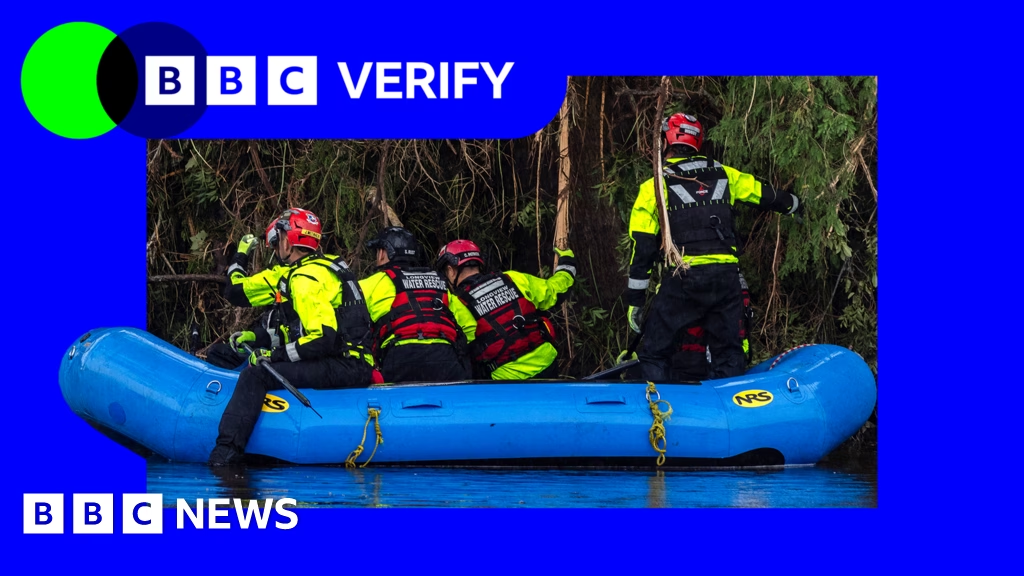In the wake of the fatal Texas floods, there is ongoing discussion regarding the impact of the Trump administration’s budget cuts on the National Weather Service (NWS) and its ability to predict such disasters. Democratic lawmakers, including Senator Chris Murphy, have pointed out that these cuts could have hindered the NWS from adequately forecasting and warning about the floods. However, the White House denies these claims, stating that the offices in question were well-staffed.
BBC Verify has investigated the effects of these budget cuts and found that while there has been a significant reduction in staff at the NWS due to the Trump administration’s attempts to streamline government operations, the staffing levels during the Texas floods were apparently sufficient. This included a 25% proposed cut to the National Oceanic and Atmospheric Administration’s (NOAA) budget, which oversees the NWS, though these specific cuts would take effect in a future fiscal year after October of this year.
As part of their efficiency drive, the Department of Government Efficiency, previously led by Elon Musk, offered incentives for voluntary redundancies and ended contracts of those on probation. Consequently, about 600 staff members were lost from the NWS’s total of 4,200 employees. In April 2025, data showed that half of the NWS offices had a vacancy rate of 20%, double the rate from a decade earlier.
Despite this, climate experts consulted by BBC Verify affirm that the NWS’s forecasts and flood warnings for the Texas event were as comprehensive as could be expected. Avantika Gori, an assistant professor of civil and environmental engineering at Rice University, and Andy Hazelton, a former NOAA climate scientist, contend that staffing issues did not directly affect the quality of forecasts and warnings.
However, some experts suggest that the cuts might have affected the coordination between local NWS offices and emergency services. The San Angelo and San Antonio offices, which cover the flood-stricken areas, reportedly had existing vacancies, including a senior hydrologist and a warning coordinating meteorologist. Nonetheless, both offices had bolstered their staffing in anticipation of the severe weather event, with the NWS asserting that all forecasts and warnings were issued in a timely manner.
Regarding weather balloon launches, which are critical for gathering atmospheric data, public statements from the NWS indicate that there were reductions in launches due to staffing shortages, although there is no evidence that this directly affected the forecasts for the Texas floods. Del Rio, the closest launch station to the flood epicenter, continued its scheduled launches, collecting data for forecasts that experts say were as accurate as possible.
President Trump has denied that government cuts left key vacancies unfilled at the NWS. The debate continues on the extent to which these budget cuts and staff reductions have compromised the readiness and effectiveness of the NWS in managing and predicting severe weather events.
Source: https://www.bbc.com/news/articles/clyndrwz00xo








